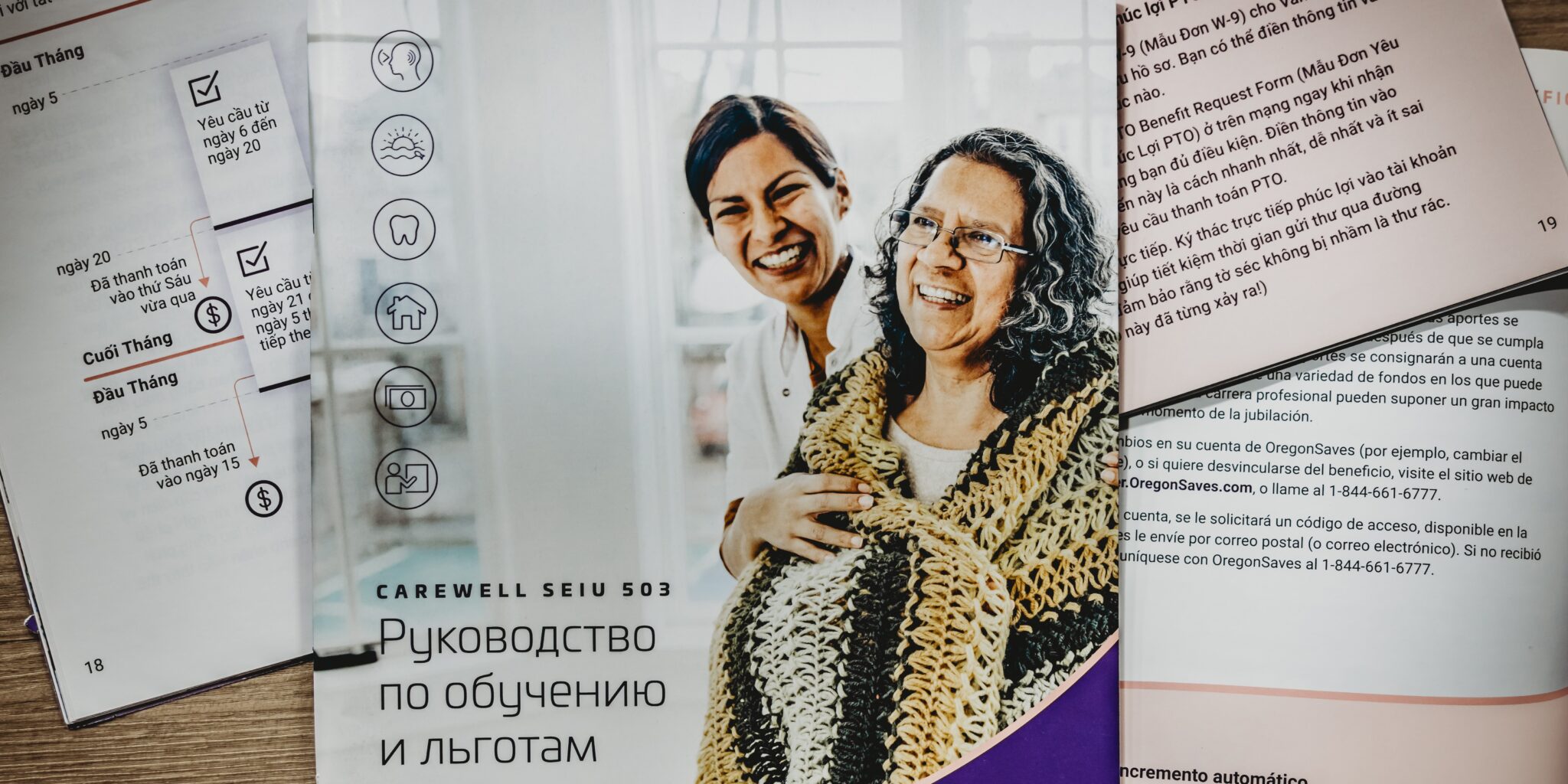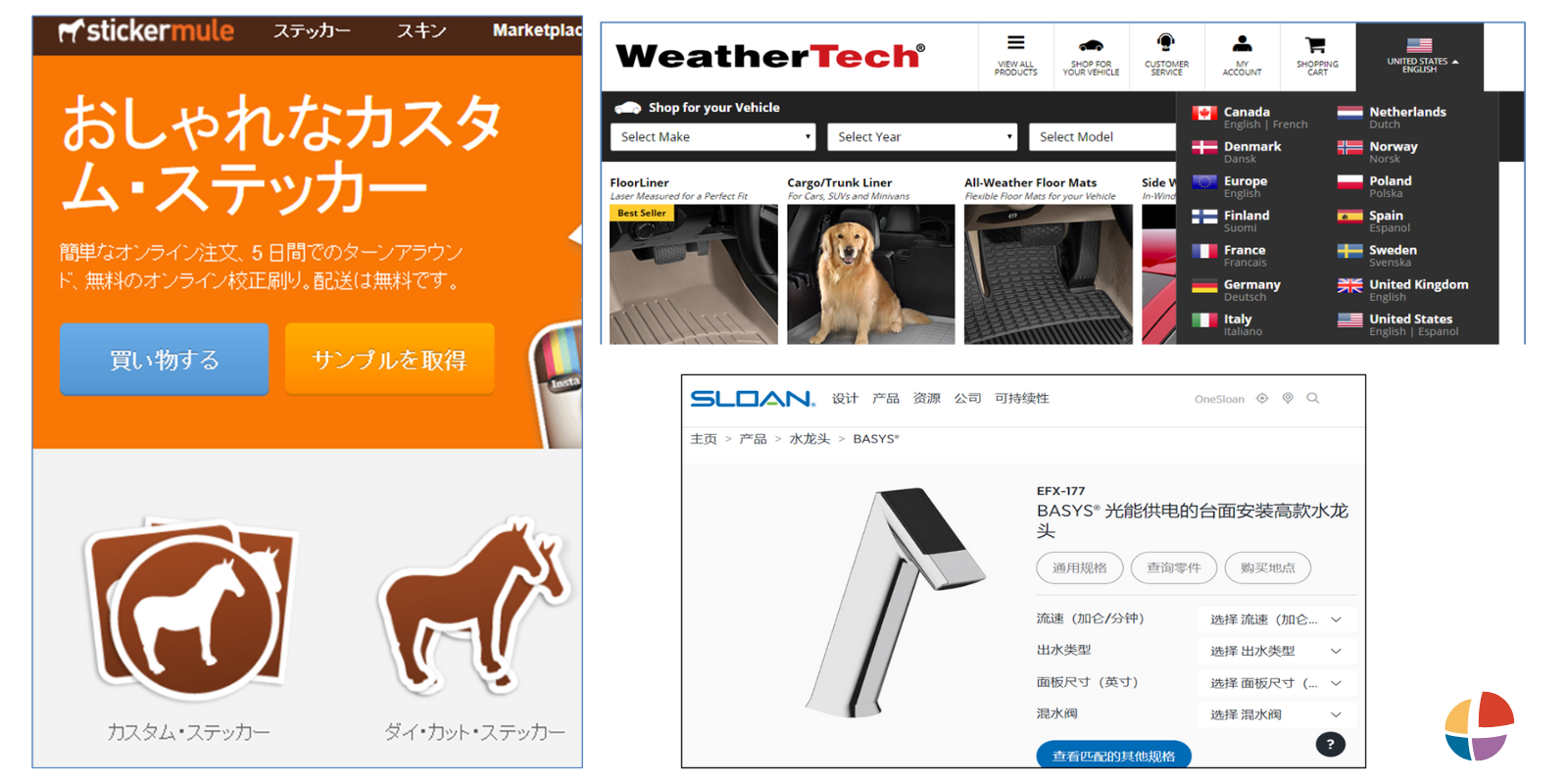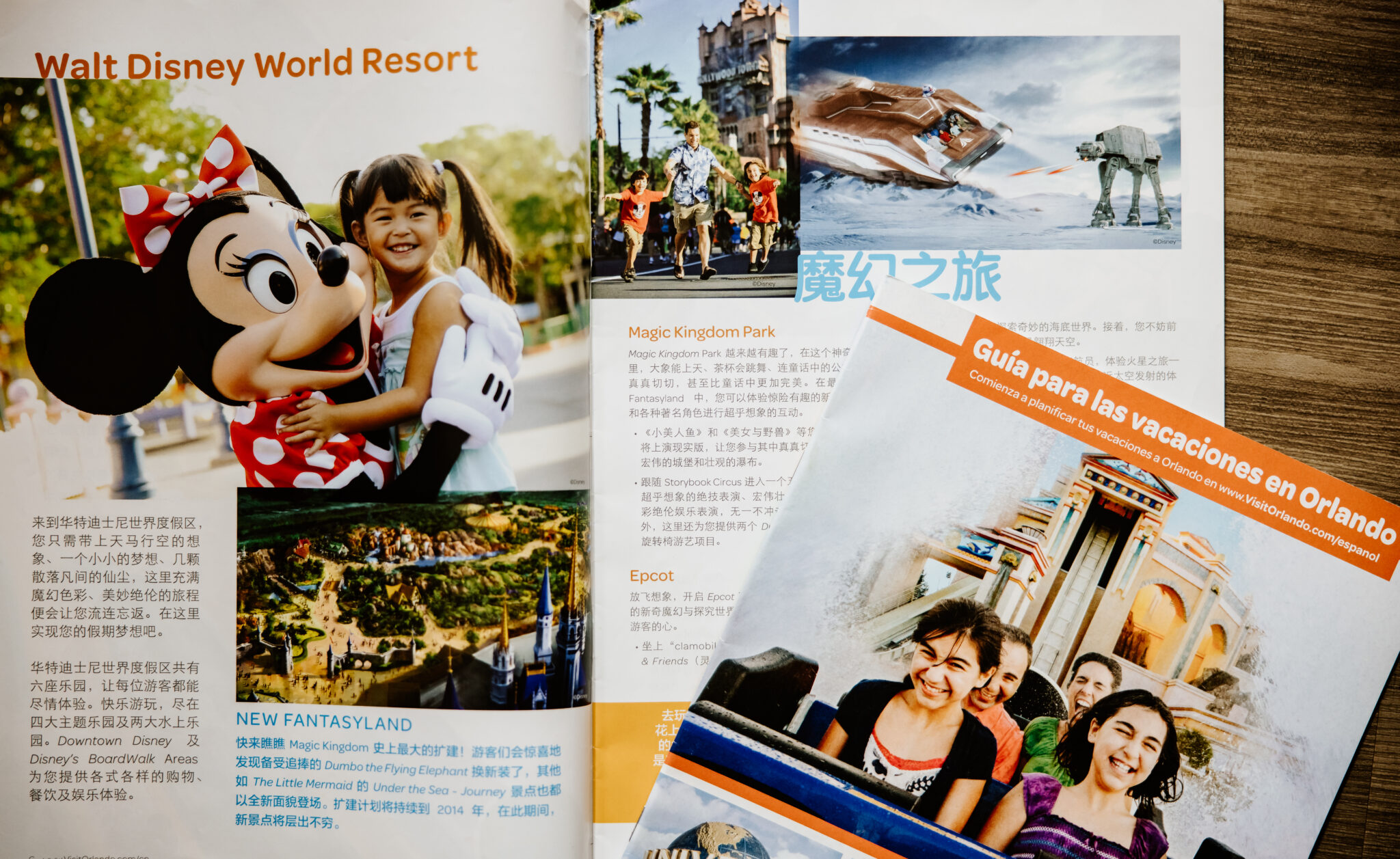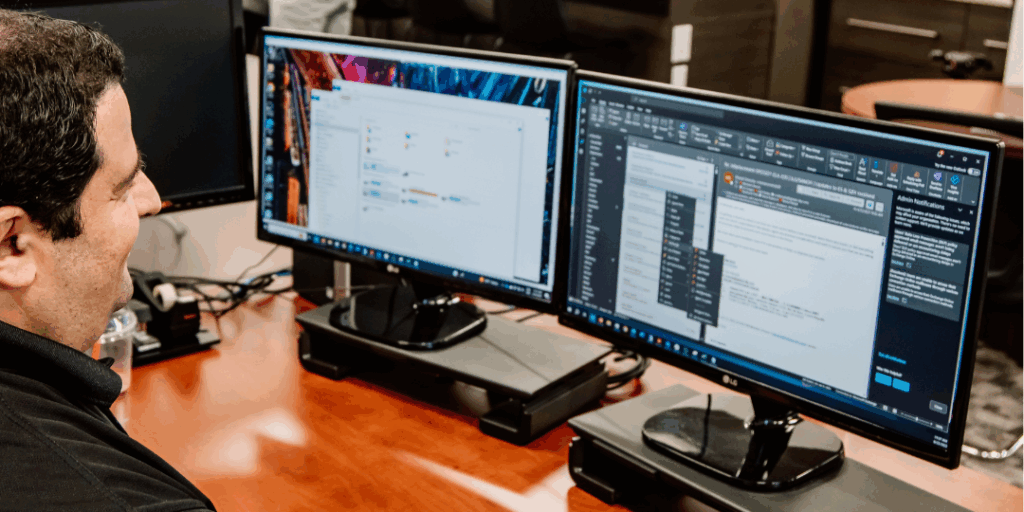
Marketing translation goes beyond word-for-word accuracy. It’s about building connections, trust, and brand resonance in every market you serve. This guide explores how to localize marketing documents effectively, navigate the creative challenges of transcreation, and maintain consistency across languages while speaking directly to your audience.
Getting Started Translating Marketing Documents
As a CMO or communications strategy manager, you probably already have something in hand that you know you want to translate. Whether it’s internal communications to build better global teams or a campaign to test if global growth is right for you.
But it’s not enough to say “translate this please”. We need to define the type of document translation you need.
So what should you expect when asking for a marketing translation? That’s what we’ll cover in this article.
What Is Marketing Document Translation?
Marketing document translation refers to the adaptation of promotional content such as brochures, websites, social media ads, email campaigns, product catalogs, and more into another language.
But you’re far more likely to be considering professional localization or transcreation (which we’ll also cover in this article). The translation of marketing material is one of the most challenging areas of the translation and localization industry.
When you’re translating instructions or help documents, the goal is very clear. You’re not trying to be creative. You just need to explain how to use something in a way that makes sense in the new language. Translators need to have subject matter expertise and write clearly. These kinds of translations don’t have hidden messages or special meaning, just facts.
Marketing is very different. Marketing is about getting people to take a desired action. So, the goal of a brochure is not the same as a user guide. A brochure needs to catch attention, persuade, or trigger an emotion – while a user guide just needs to explain how something works.
How to Handle Creative Marketing Campaigns in Translation
So how should the translator handle it? Should they get creative or just stick to the words?
Usually, a translator’s job is to say the same thing in another language without adding or leaving anything out. They localize the content and keep the meaning, style, and cultural tone of the original text intact. But just following those rules doesn’t always work for marketing content. A basic word-for-word translation might not share the real message the company wants people to feel.
Interpro has partnered with many global marketing teams to localize global websites and supporting documentation.
Translating branded material requires a special kind of subject matter expert who can preserve your brand’s tone, values, and intent while ensuring the content resonates with new cultural and linguistic contexts. This is where transcreation, a blend of creative translation and copywriting, often plays a critical role.
What is Transcreation?
Transcreation is the adaptation of marketing content across languages in a way that preserves emotional resonance, intent, and brand voice. It often requires collaboration with your team and could involve a complete rewrite by a native-speaking marketer rather than a literal translation. It’s most applicable when direct translation would miss cultural nuance, humor, or persuasive impact.
Take a look at this Coca-Cola ad – this is localization and transcreation in action. It was likely originally developed in English and either localized or transcreated for the Colombian market. Notice how the visuals, tone, and cultural cues were adapted to resonate with local audiences.
Translating marketing material is trickier than it looks. A joke or catchy phrase in one language can sound silly or even rude in another. Slogans and taglines often can’t be translated at all because they depend on culture, wordplay, or local references that don’t exist in other countries. Things like metaphors or rhymes may need to be completely reimagined in the new language.
When we see creative marketing materials, that’s when we ask: is a regular translator the right person for this kind of creative work?
Transcreation Applications in Marketing:
You may be seeking transcreation services for the following materials:
- Social Media Campaigns: Rewriting taglines, captions, and hashtags so they’re culturally relevant and grab attention in the target language.
- Email Marketing: Adapt subject lines, CTAs, and body content to reflect relevant offers for the target audience, voice, tone, and preferences of local readers.
- Websites: Reworking hero copy, value propositions, headlines, and even visuals to appeal to cultural buying behaviors and expectations.
- Internal Culture Campaigns: Translating company values or DEI messaging in a way that resonates with global teams, not just linguistically but emotionally and contextually.
- Ad Copy & Slogans: Replacing or rewriting slogans that rely on wordplay, idioms, or emotional appeal so they make sense and have the same persuasive power in another market.
- Product packaging, brochures, and catalogs for international distributors
To clarify:
- Standard translation conveys meaning accurately, focusing on word-for-word conversion.
- Marketing translation and localization ensures that meaning is emotionally relevant and culturally aligned, and the brand visuals and voice stay consistent across marketing channels.
- Transcreation goes even further, recreating content to evoke the same impact, emotion, and action in each target market, often requiring a total rewrite rather than a direct translation.
Transcreation Examples in Marketing
Slogan transcreation example: “Crack Open a Smile”
“Crack Open a Smile” may become “Happiness in Every Sip” in one language and “Taste Joyfully” in another to retain its original sentiment.
It might land well in English, but directly translating it to another language could confuse or even alienate the target audience. In transcreation, that phrase is reimagined to retain its original intention but make sense in the new language.
Graphics localization example: Visit Orlando
One of Interpro’s clients did transcreation of marketing brochures that included:
- Visual representation: Making sure the audience sees themselves reflected in the content increases relatability and trust.
- Cultural relevance: Certain images, colors, gestures, or expressions may carry different connotations across cultures.
- Emotional resonance: The goal is to recreate a brand that resonates with emotional impact for a different audience, which often requires changes to images, layout, tone, and phrasing.
Interpro has helped countless clients tailor their documents for diverse U.S. audiences or global marketing campaigns. We connect you with the right subject matter expert to ensure your message is understood and impactful.
This image is a perfect example of transcreation in practice. Rather than simply translating the text of a vacation guide, the publishers adapted the entire experience for different cultural audiences. The Chinese-language version features imagery and messaging tailored to resonate with Asian families, while the Spanish-language version highlights visuals more relatable to Hispanic audiences.
When seeking language services, you’ll want to consider the level of translation, localization, or transcreation you’ll need. A provider like Interpro can provide consultative advice on what level of localization will be the best fit, depending on your marketing goals.
How Your Translation Partner Seriously Impacts a Successful Global Growth Strategy
A well-documented example of global branding gone wrong is KFC’s mistranslation of its slogan “Finger Lickin’ Good” in China. When KFC entered the Chinese market in the late 1980s, the slogan was translated literally, resulting in the phrase “Eat your fingers off.” This translation not only confused consumers but also damaged KFC’s brand image in China, forcing the company to quickly correct the error and adjust its marketing approach.
Investing in high-quality marketing translation helps you:
- Protect your brand from misinterpretation and reputational damage
- Build trust with local audiences who feel understood and respected
- Increase conversions and engagement by aligning content with cultural values
In fact, research shows that 76% of consumers prefer to buy products in their native language, and over 40% say they won’t even consider purchasing from websites in other languages.
But how do you make sure your brand doesn’t end up like KFC’s?
Successful global expansion requires teamwork and collaboration from many subject matter experts. The translator does their best job, shares helpful notes or suggestions, and brings ideas to the table. But only the client knows their brand, their audience, and how they want to be seen. They’re the ones who should make the final creative choices. But you need a partner that can bring that creativity to life in other languages.
We frequently collaborate with clients to create tools to elevate your brand. We suggest:
- Provide a detailed creative brief to help the team understand the complexity of the marketing materials.
- Providing past marketing references.
- Creating tools like translation glossaries or style guides to educate the translation team on your brand.
- Share feedback on the translation and send back the edited version. When clients and translators work together, the results are better and both sides are more excited to work on the next project.
We’ve seen this time and time again – businesses that invest in translation and localization the way they invest in their brand pays off in global expansion. Armstrong International is a clear example of an Interpro client experiencing global growth through localization.
Key Takeaways: Marketing Translation Challenges (And How to Solve Them)
Your translation partner should be able to offer expert guidance on how to navigate considerations like these:
- Cultural Nuances Marketing thrives on emotional resonance: humor, idioms, and wordplay. These often don’t translate directly. A campaign slogan that’s witty in English might sound flat or inappropriate in another language. To solve this, we use transcreation, working with in-country linguists who deeply understand both language and culture.
- Design Limitations In DTP-heavy formats like InDesign, even small changes in word length can cause major layout shifts. Right-to-left languages like Arabic require mirrored formatting. We collaborate early with client design teams to adjust layouts and prevent costly redesigns post-translation.
- Missing Source Files Clients sometimes only have PDFs and not the original design files. In these cases we can recreate the PDF to be editable, but doing this adds substantial time and cost. Planning ahead ensures your translation partner receives native files like .INDD or .PSD to streamline the process.
- Regulatory and Legal Language Industries like healthcare, finance, and education require marketing copy to meet strict legal and compliance standards. Our certified translators are also subject matter experts who ensure these materials remain accurate and legally sound.
- International Content Strategy: SEO and search behavior isn’t universal. A keyword that drives traffic in the U.S. might not even register with users in Mexico or Germany. China uses a completely different search engine from the states. You’ll need to localize your strategy along with the content.
- Transcreate key messages: CTAs, headlines, and taglines often need more than direct translation to preserve persuasive impact. Native speakers familiar with local trends and consumer behavior can fine-tune messaging for effectiveness.
- Create a brand glossary and tone guide: This ensures brand consistency across campaigns globally and prevents misalignment during the localization process.
- Involve your language partner early: Don’t wait until after the design is finalized. Collaboration from the start avoids rework and delays
Need Help? Interpro offers complimentary marketing translation consultations because we know you need advice on how to get started before you get started. Let’s ensure your brand speaks clearly, confidently, and culturally in every market you serve.
Real Marketing Translation Example: Carewell
Carewell provides healthcare training to multilingual communities. They’ve partnered with Interpro to translate complex InDesign documents and promotional assets. Our team helped them translate marketing documents across many different languages, in addition to videos, educational courses, and their website.
Interpro’s client, Carewell, translates many healthcare and promotional document materials for their audience.
“Working with Interpro made a world of difference,” said Nicole Fullerton, Customer Innovations Manager.“ They understand how to maintain message integrity while adapting to each audience. We’ve seen stronger engagement from caregivers and better performance across the board.”
Great marketing translation requires a partner who:
- Specializes in marketing, creative, and transcreation services
- Offers DTP and file engineering for complex layouts and file types
- Has a multi-layered quality assurance processes
- Takes a collaborative approach from initial strategy to final delivery
Launch Your Next Global Campaign with Localization Experts
We know translating and localizing marketing campaigns isn’t easy. The advice we provide is based on a successful track record translating thousands of projects over more than thirty years, and we have the expertise to help your business expand into new markets.
Want a behind-the-scenes glimpse of the professional translation experience? Book a free consultation and sample translation to see how we provide localization strategy advice and approach your branded materials.
Category: Localization, Translation
Tags: Indesign Translation, Marketing, Multilingual DTP, Transcreation
Service: Document Translation, Translation Services
Don't forget to share this post!
Stay Updated with Interpro
Subscribe to our newsletter for the latest updates and insights in translation and localization.







